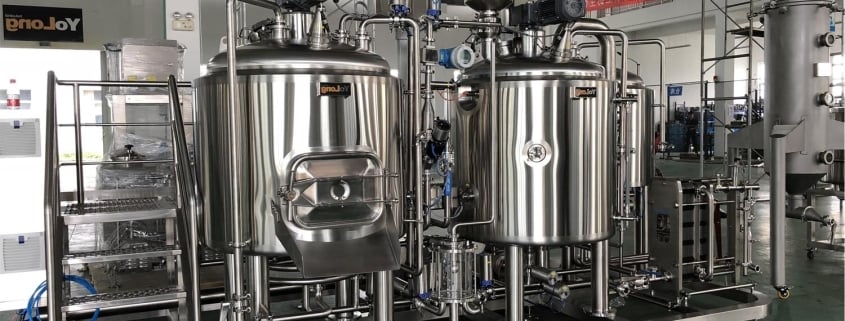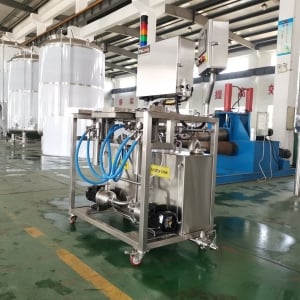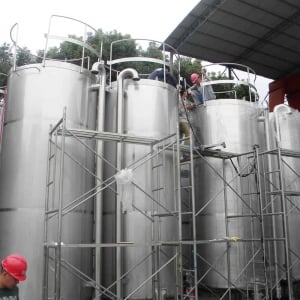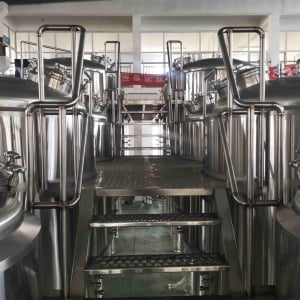A deeper understanding of 1 BBL Fermenter
1 BBL Fermenter enable nano and microbrewery operations by providing dedicated vessels for safe, consistent fermentation critical to craft beer production. This comprehensive guide educates brewers on selecting 31 gallon fermenters optimized for space, budget and quality considerations.
Overview of 1 BBL Fermenter
1 BBL fermenters with 31 gallon capacity facilitate small batch fermentation for artisanal brewing. Available in stainless steel and plastic, they must withstand pressure, corrosion and cleaning stresses over thousands of cycles.
This guide covers key factors selecting 1 BBL fermenters:
- Fermenter Types and Variants
- Dimensions, Capacity, Customization Options
- Feature Comparison – Cooling, Temp Control, Ports
- Pressure Ratings, Materials, Construction
- Supplier Price Ranges and Quality Spectrum
- Installation Requirements and Layout
- Cleaning, Filling, Monitoring Best Practices
- Pros and Cons of 1 BBL Fermenter Options
- FAQ on Selection, Operation, Maintenance
Recommendations are provided across budget tiers from reputable to generic brands. Upfront investments in vessel quality provide significant long term leverage. Trade-offs across criteria facilitate data-driven decisions catered to individual needs and constraints.
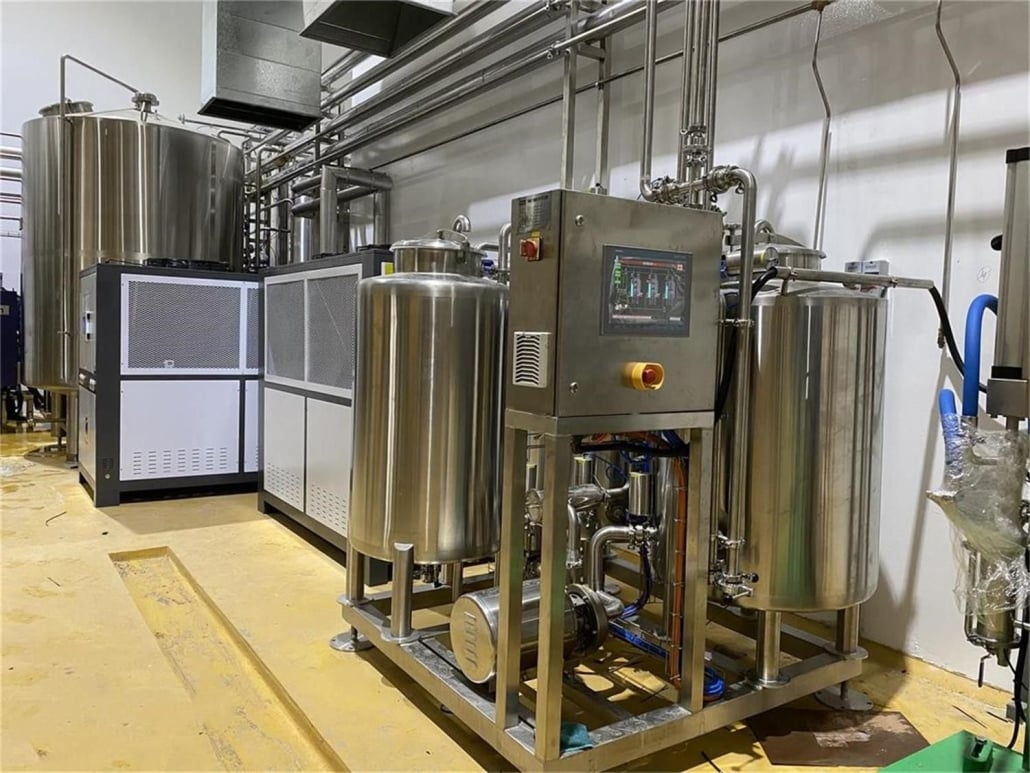
Types of 1 BBL Fermenter
Many fermenter configurations exist for craft breweries. Main variants compared:
Table 1: Types of 1 BBL Fermenters
| Type | Description |
|---|---|
| Conical | Cone-shaped bottom, efficient yeast removal |
| Cylindrical | Barrel-shaped, simpler flat bottom |
| Unitank | Uni-body with built-in temperature control |
| Fermenting Vessel (FV) | Open-top basic fermenter, affordably priced |
| Brite Tank | Pressurized for carbonation, clarification & storage |
Additional Subtypes:
- Single-walled Stainless Steel
- Jacketed for glycol/steam heating/cooling
- Tri-clamp or Weld connections
- CoolFit plastic high density polyethylene (HDPE)
- Custom one-off or modular standardized
When selecting across types, factor in cooling needs, available space, number required, ease of cleaning, and budget. Conicals allow efficient yeast collection but have higher price points. Open FVs offer simplicity for smaller producers starting out.
1 BBL Fermenter Capacity, Dimensions & Customization
Understanding fermenter capacity options prevents under or over-sizing. Dimensions are critical for space planning, delivery access, installation and cleaning.
Table 2: 1 BBL Fermenter Capacity and Dimensions
| Conical Vessel | **Cylindrical Vessel ** | |
|---|---|---|
| Volume | 31 gallons | 31 gallons |
| Height | 84 inches | 72 inches |
| Diameter | 24 inches | 30 inches |
| Wall Thickness | 0.12 inches | 0.09 inches |
| Slope | 55 degrees | Flat bottom |
| Weight | 150 lbs | 100 lbs |
| Fittings | Tri-clamp | Tri-clamp |
Conicals tend to be taller with smaller diameter, while cylindrical have larger diameter
Customization:
- Wide range of dimensions and fittings
- Cooling jackets, sight glasses, over-pressure valves
- Casters for mobility, door access hatches
- Import registers for cleaning verification
- Unique ports, sample valves configurations
Discuss specialized custom enhancement options during design. Balance requirements with costs.
Comparing Features: Cooling, Temperature, Ports
Critical capabilities differentiate premium versus generic fermenters – assess cooling capacity, precision temperature control, and customizable fittings.
Table 3: Fermenter Feature Comparison
| Feature | **Premium Vessel ** | Basic Vessel |
|---|---|---|
| Cooling System | Advanced glycol/steam jacket | Ambient cooling only |
| Temp. Control | + /- 0.1 °F sensitivity | Limited accuracy |
| Thermometer | Digital RTD sanitary probe | Basic analog dial |
| Ports | Sanitary tri-clamp | Threaded or welded |
| Relief Valves | Overpressure certified | Uncertified generic |
| Sample Valve | Dedicated sterile sampling | Shared racking port |
| Doors/Sight Glass | Large ports for visibility | Small view window |
| Casters | Yes, for easy portability | No casters included |
Carefully validate cooling capacity needed. Glycol chilling or steam heating offer precise control but have higher infrastructure requirements. Compare ports, valves, probes, and visibility options across models.
Pressure Ratings, Materials and Construction
As pressurized vessels, fermenters must safely withstand cleaning and fermentation stresses without leakage across thousands of cycles. Rigorously scrutinize ratings and materials among suppliers at different tiers.
Table 4: Fermenter Pressure Ratings, Materials and Construction Comparison
| Parameter | Premium | Basic |
|---|---|---|
| Design Pressure | >16 PSI | 5-10 PSI |
| Hydro Test Pressure | 25 PSI | 10 PSI |
| Safety Factor | >4X maximum pressure | Unspecified |
| Observation Area | > 18′′ Window | < 12′′ Window |
| Surface Finish | < 10 Ra | Higher Ra |
| Welds | Smooth continuous internal welds | Overlapping rough welds |
| Material Certs | Available from reputable mills | Unverifiable Chinese origin |
| Grade | 304 or 316 stainless steel | Lower grade stainless or plastic |
Other Material Choices:
- CoolFit HDPE Plastic – inexpensive but scratched easily
- Stainless steel grades – 201, 304, 316 options
Carefully evaluate material thickness, construction tolerances, surface finish, weld smoothness and pressure ratings between suppliers. Thicker-gauge steel and smooth welds prevent contamination and failure risks. Review test certifications from steel mills to validate quality and traceability compared to dubious sources.
1 BBL Fermenter Suppliers & Price Ranges
Many fermenter manufacturers serve craft breweries with tiered offerings based on requirements and budget. Vet suppliers thoroughly:
Table 5: 1 BBL Fermenter Suppliers & Price Ranges
| Supplier | Description | Price Range |
|---|---|---|
| FC Orbital | High-end orbital welded, engineered to order | $5,000+ |
| JV Northwest | Mid-tier reliable quality, custom fabrication | $3,000 – $5,000 |
| Glacier Tanks | Economy bulk tanks, focus on affordability | $2,000 – $3,500 |
| Alibaba Exporters | Questionable Chinese manufacturers | Under $2,000 |
- Buy under $2,000 per fermenter at your own risk – extreme quality variability*
Review warranties. Premium brands offer 5-10 years for defects while commodity tanks have 90 days or less. Leaks and failures translate into costly lost product and downtime – invest to avoid risks.
Request references to contact existing customers. Validate lead times as Chinese fabricators often over promise and under deliver while US shops quote reliably.
1 BBL Fermenter Installation Requirements
Optimizing small spaces for 1 BBL fermenter installation requires planning to accommodate vessel dimensions, cooling lines, venting, filling heights and cleaning access.
Table 6: 1 BBL Fermenter Installation Considerations
| Factor | Details |
|---|---|
| Location Constraints | Floor weight limits, access paths (doors/elevators) confirmed to fit tanks? |
| Tank Spacing | At least 36′′ between tanks and 12′′ from walls for access |
| Glycol Chiller Space | Will separate chiller unit fit with required cooling line distances? |
| Ceiling Height | Enough overhead room for lifting vessels into place? |
| Cleaning Access | Can spray balls service and drain the full interior surface area? |
| Electrical | Available 220V outlet for cooling, lighting, instruments |
| Venting | Is vent line outlet location confirmed free of obstructions? |
| Environmental | Proper floor drainage slope, effluent capture for spills |
| Safety | Physical restraints, warning signs, equipment inspections |
Involve contractors early to survey constraints and identify modifications needed during design. Shortcuts inevitably become painful.
Cleaning, Filling and Monitoring Best Practices
Consistent fermentation quality requires meticulous vessel cleaning, sterile filling technique, yeast pitching precision, and environmental monitoring.
Table 7: 1 BBL Fermenter Care Best Practices
| Activity | Method | Frequency |
|---|---|---|
| Cleaning | CIP spray balls, soak with caustic / acid combo | Each batch completion |
| Sterilization | 180°F hot water purge, final rinse | Immediately pre and post filling |
| Filling | Bottom fill under 9 PSI blanket pressure | Each new beer batch |
| Yeast Pitch Rate | Calculate viable cells based on wort density | Every fermentation |
| Aeration | Oxygenate via diffusion stone before yeast | Only at KO filling stage |
| Temperature Logging | Digitally log temps hourly | Entire fermentation cycle |
| Tasting | Thief yeast / clarify samples aseptically | Daily the initial 5 days |
Extensive standard operating procedures exist across each dimension to safeguard repeatability. Detailed training prevents compromising batches – so much depends uponTM consistent fermenter operations…
Pros and Cons of 1 BBL Fermenter
While versatile 1 BBL fermenters provide nano and microbrewers tremendous control over quality and experimentation compared to outsourced production, intrinsic limitations remain around space constraints, production volumes, and labor intensity for small companies.
Table 8: Pros and Cons of 1 BBL Fermenters
| Positive Attributes | Limitations to Consider |
|---|---|
| Pros | Precise production control, flexibility, base for innovation |
| Advantages | Lower capital investment than bigger fermenters |
| Enables broader portfolio variety and seasonal offerings | |
| Fosters closer customer engagement thru small batches | |
| Cons | Equipment costs per barrel still higher than large operations |
| Disadvantages | Very space and labor intensive for the volume |
| Restricted revenue and profit growth compared to scaled plants | |
| Separate cleaning, filling, monitoring needed each batch |
By understanding these practical trade-offs instead of overpromising capabilities, entrepreneurs can creatively craft their business model constraints into strategic advantages if executed well.
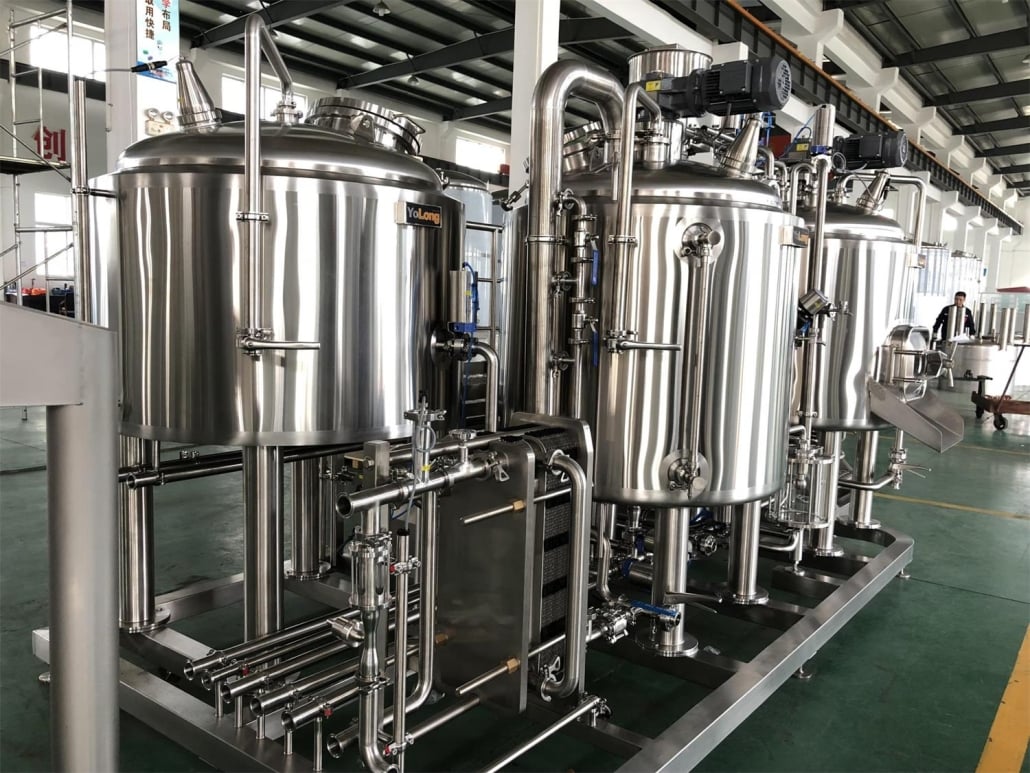
FAQ
Table 9 – 1 BBL Fermenter Selection FAQs
| FAQ | Answer |
|---|---|
| What size pilot batches are recommended? | To test recipes at production scale, start with 10% of the fermenter volume, then scale up recipe. |
| Should I choose conicals or cylinders? | Conicals for yeast harvesting benefits, cylinders where space limited. |
| How many do I need per brew house? | Minimum 3 vessels per brewhouse. Size to match packaging capability. |
| What thickness stainless steel? | 0.12 inches better for durability. 0.09 inches risks denting. |
| How critical are glycol chillers? | Precise temperature control prevents off-flavors – recommended if affordable. |
Table 10 – 1 BBL Fermenter Operation FAQs
| FAQ | Answer |
|---|---|
| What training is needed? | Intensive sanitation, cleaning, filling, pitching, monitoring protocols. |
| How do I calculate yeast requirements? | Need yeast pitch rate calculator. Depends on wort gravity, viability percentage, volumes. |
| At what pressures should tanks be kept? | 1.5-2.5 PSI during active fermentation via blowoff arm or spunding valve. |
| What CO2 line regulation is ideal? | 8-10 PSI for proper purging before filling. |
| How do I confirm tanks are clean? | Swab plates, ATP meters to validate sanitation efficacy between batches. |
Table 11 – 1 BBL Fermenter Maintenance FAQs
| FAQ | Answer |
|---|---|
| How often should I replace gaskets and seals? | Annually or immediately at any sign of leaks or deterioration. |
| What daily checks are needed? | Log pressures, temperatures, growth/activity curves of each batch. |
| When should I drain yeast banks? | When yeast health, quality and viability begin to taper off – strain dependent. |
| What metals should be avoided for valves? | Brass and copper. Focus on stainless steel for all process contact surfaces. |
| Should I insulate tanks? | Not required but will reduce cooling load and prevent condensation drips. |

